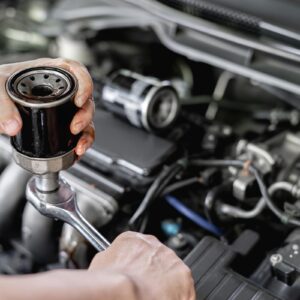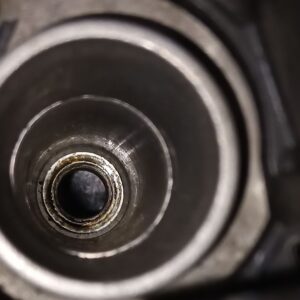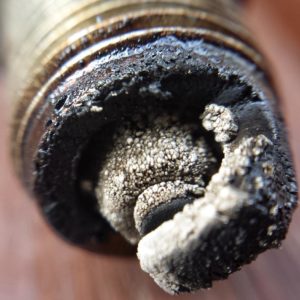Small components that eventually get damaged are usually the reasons behind major engine troubles. For example, a small leak in the radiator hose can cause coolant to leak. Before you know it, you’re stranded on the side of the road with a busted radiator.
The same idea applies to the oil drain plug and its gasket, both of which are crucial in keeping the oil in the engine and off the ground.
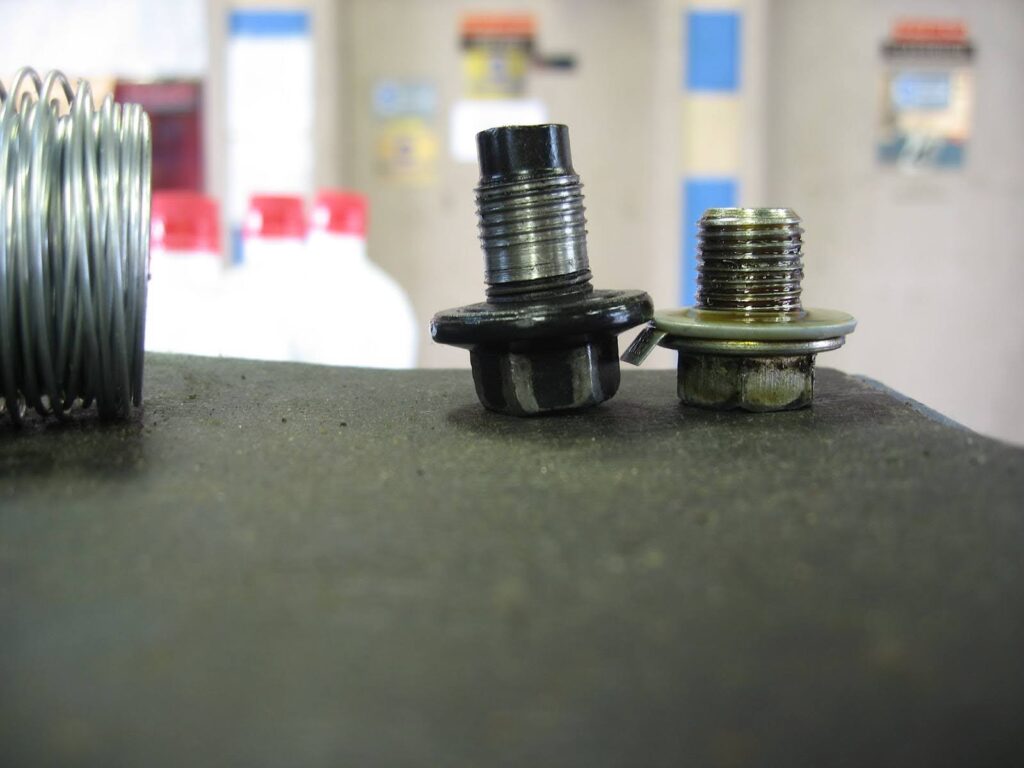
The Importance of an Oil Drain Plug
The oil drain plug is a screw plug that sits at the lowest point of the oil pan to let the oil flow freely using gravity. Some plugs have a magnetic tip made from neodymium to capture metal particles that are suspended in motor oil.
The drain plug is removed during an oil change for obvious reasons. It’s one component that is removed and reinstalled repeatedly over the life of the vehicle, more than any other part except the filter, but you get a new filter with each oil change. Some oil change kits for VWs come with a replacement oil drain plug for each oil change, and while this adds a bit of cost to the oil change, it’s not a bad idea.
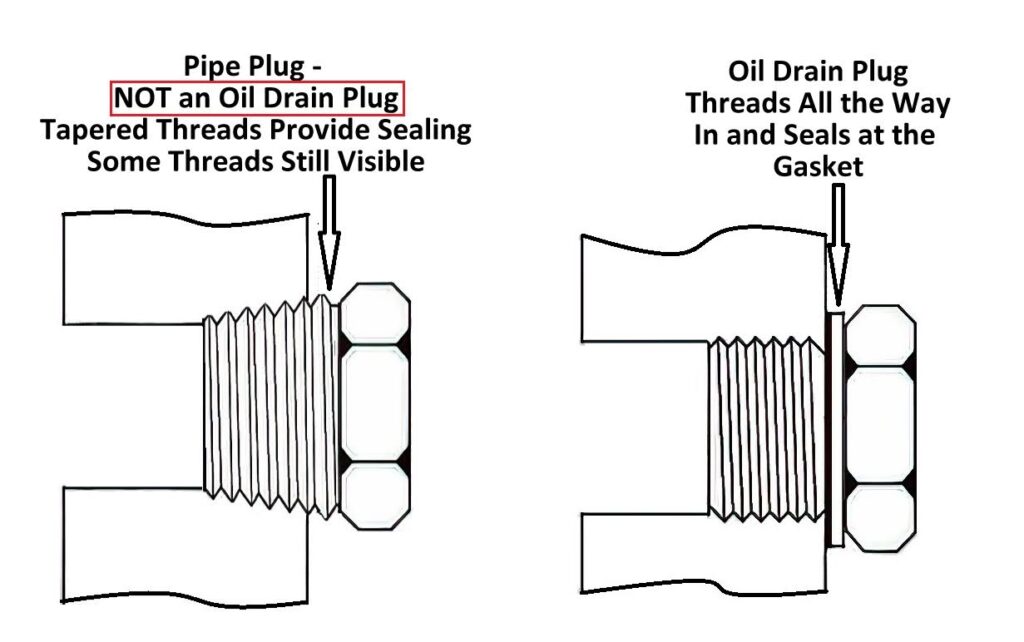
Issues Related to a Stripped Oil Drain Plug
Oil can leak from the plug because it doesn’t seal properly anymore. In most cases, a poor flange seal or a damaged gasket can lead to this problem.
How to Spot a Stripped Oil Drain Plug
An oil drain plug that won’t tighten is your first clue that it’s stripped. Also, if the oil drain plug has to be completely removed with a wrench after the initial loosening (hard to turn all the way out), the threads are on their way to being stripped due to repeatedly being removed and reinstalled over time.
What Causes the Oil Drain Plug to Strip?
Cross-threading almost never happens on an oil drain plug, but it can happen. Overtightening can also be a factor.
But particularly on steel oil pans, the oil drain drain plug is a softer metal than the hardened threads in the oil pan and will simply wear out with continual removal and reinstallation. This is very common on vehicles that have had a lot of oil changes.
To ignore a drain plug that is hard to remove even after breaking it loose with a wrench means you may have a stripped oil drain plug waiting to happen.
Another factor is the proper thread pitch. Parts stores will know which drain plug fits unless the threads have been modified. Not all drain plugs have the same thread size and pitch.
Also, if a cheap 12-point wrench or socket or a wrench the wrong size is used, the flats on the head of the plug can be rounded off even though the threads are fine.
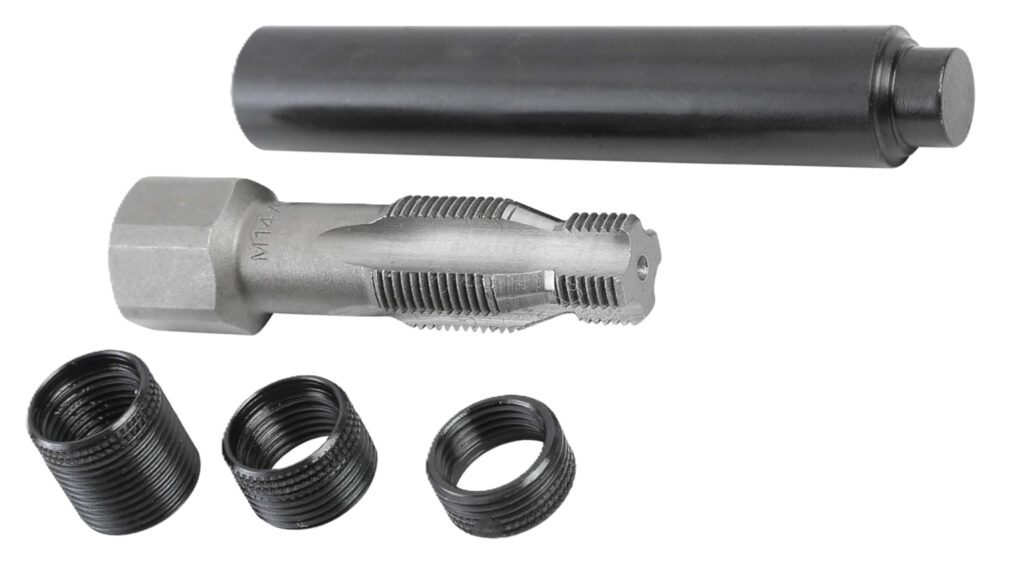
On aluminum oil pans, the threads in the pan are more likely to be stripped than the plug, which means a steel insert will need to be installed to repair the pan. This might be too difficult for a green DIY person, but you can use a spark plug insert (see photo), which works well. Use the tap that comes with the spark plug inserts, but use the shortest insert and be careful. You can also do this on a steel oil pan.
After you’ve installed and staked the insert with the tool that comes with the kit. After the spark plug insert is in place, buy a drain plug that is 14mm 1.25 thread pitch, which is the same as standard spark plug threads.
On aluminum oil pans, the threads in the pan are more likely to be stripped than the plug, which means a steel insert will need to be installed to repair the pan.
– Richard McCuistian, ASE Certified Master Automobile Technician
Cross-Threading
Cross-threading practically never happens on an oil drain plug. In the rare instance it occurs, the threads of the plug will not be aligned with the threads in the part it’s being fastened to. One possible way it could happen is when you put the plug back even when it’s not installed properly and force it the rest of the way.
Overtightening
Overtightening happens when you use too much force to place the plug back in or if somebody tries to turn it the wrong way when removing it, which leads to disaster. If you need a new gasket, get one, but once the plug is tightened to 19 lbs ft., you don’t need to tighten it any more.
How to Remove a Stripped Oil Drain Plug
The term “small but terrible” perfectly fits the oil drain plug, especially when you fail to replace it as soon as it gets damaged. After all, it can contribute to a series of major problems once it breaks or fails to do its job.
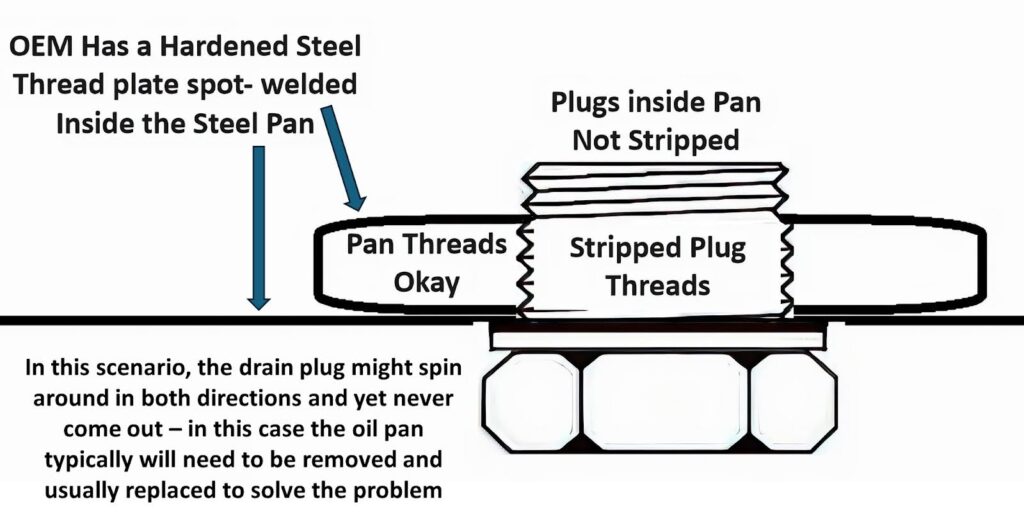
The good news is that unless you see a scenario like the one in the diagram, it’s fairly easy to remove a stripped oil drain plug, and you can do it from the comfort of your driveway.
Before anything else, it’s important to have a replacement oil drain plug ready to go. This makes the process easy because you only need to remove the old plug and install the new one right away with no waiting time. This is, of course, unless you’ve decided to do an oil change at the same time, in which case you’ll need to have a drain pan under the plug when you screw it out.
If the flats on the head of the plug are rounded, a set of vise grip pliers or equivalent can be used to grip the rounded-off head. Place the tool around the stripped plug, then turn it counterclockwise to loosen the plug.
Can You Repair a Stripped Oil Drain Plug?
The most practical way to deal with a stripped oil drain plug is to simply replace it with a new one.
Replacing the Oil Drain Plug
Removing the oil drain plug is necessary every time you get an oil change, which means inspecting it should also be on your maintenance checklist. Again, it’s not a bad idea to replace the drain plug with every oil change or at least every third oil change. Reusing the same plug multiple times can eventually strip the threads and result in oil leaks.

Final Thoughts
The oil drain plug is a small part that can result in major problems once it’s stripped.
If you don’t replace a stripped oil drain plug, it could cause oil to leak from underneath the vehicle, which means moving metal parts will get insufficient lubrication.
In most cases, a stripped oil drain plug can be attributed to cross-threading and overtightening. Inspecting the oil drain plug every scheduled oil change can help you determine when it’s time to get a new plug.
Getting Your Hands on a Replacement Oil Drain Plug
A bad oil drain plug can cause oil to leak from underneath the vehicle. This damages moving metal parts due to inadequate lubrication. Fortunately, finding a replacement that’s compatible with your vehicle has never been easier, thanks to CarParts.com.
You won’t have to worry about your new oil drain plug failing you any time soon — we make sure our products are just as good as your stock parts. Our auto parts are carefully vetted by a team of professionals to guarantee both quality and longevity.
The best part? You don’t even have to leave your home to order a replacement plug. Simply use your mobile device or computer to visit our website. Then, fill out our vehicle selector and use the search filters to find auto parts that match your preferred brand, price, type, and more.
On top of that, our warehouses are strategically located all over the US, so you’ll be able to receive your order within a matter of days. We’ll also help you get the most value for your money with our unbeatable deals and competitive prices.
Check out our catalog and shop now!
Any information provided on this Website is for informational purposes only and is not intended to replace consultation with a professional mechanic. The accuracy and timeliness of the information may change from the time of publication.



